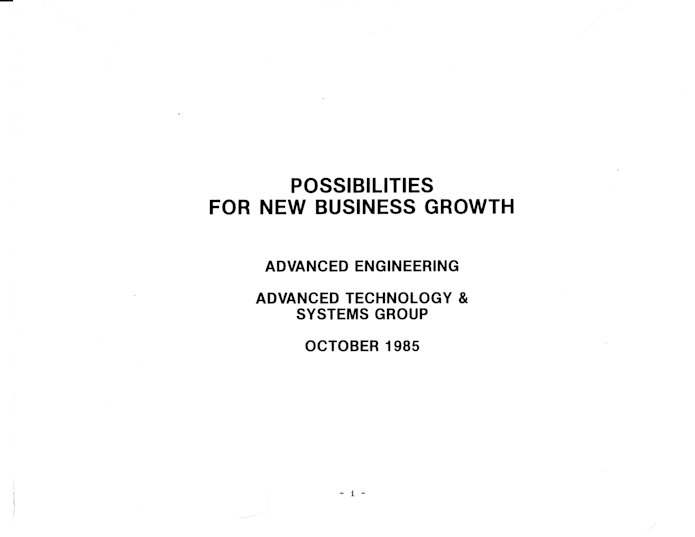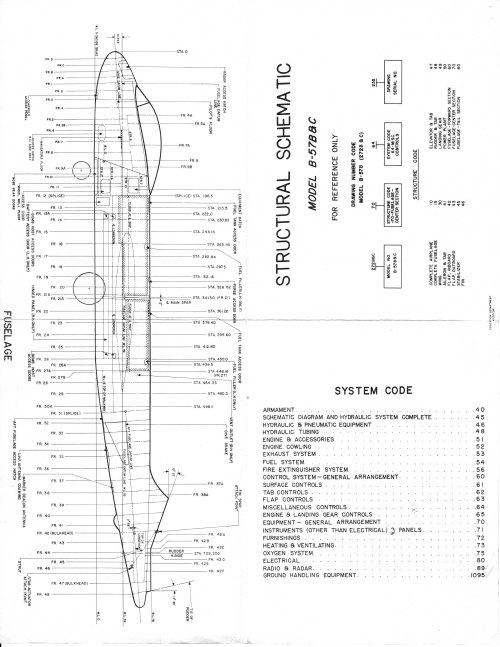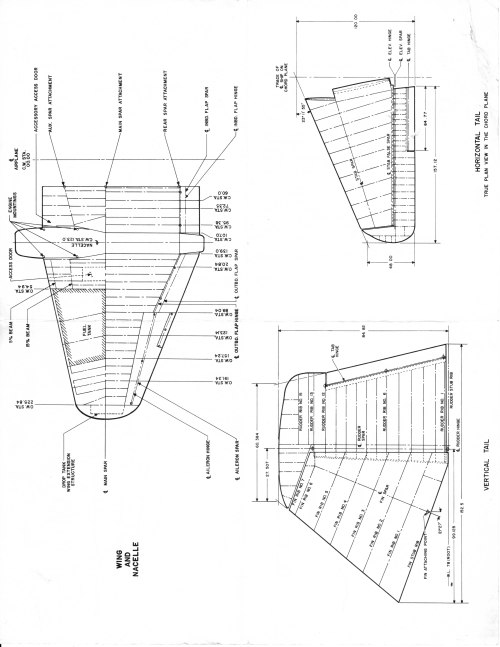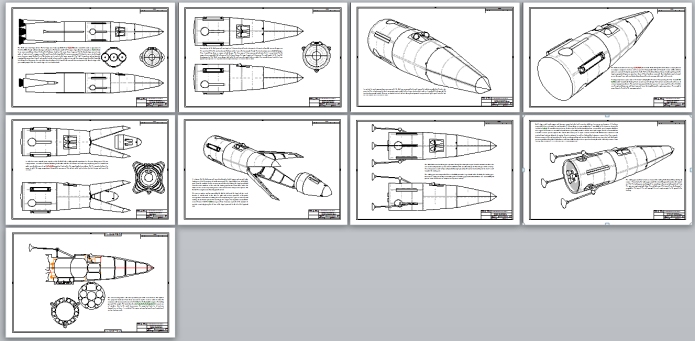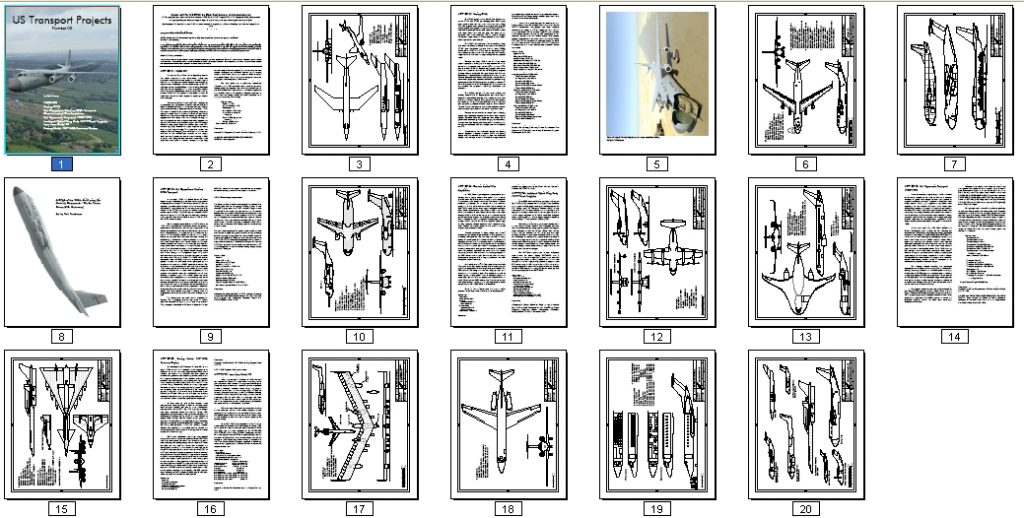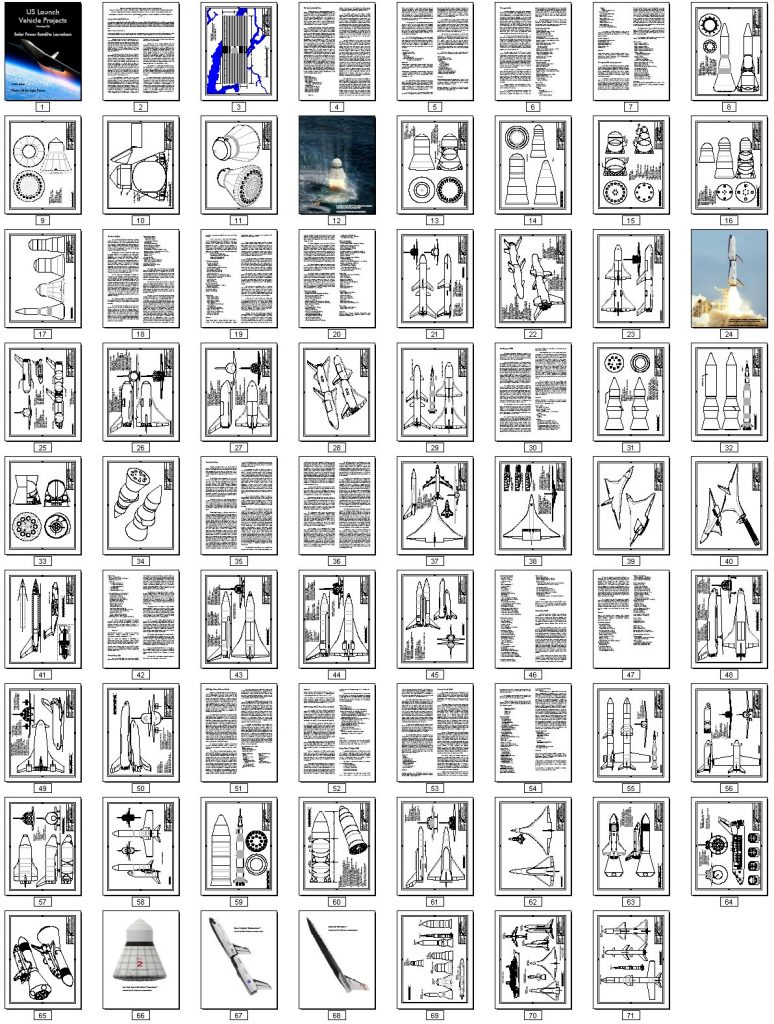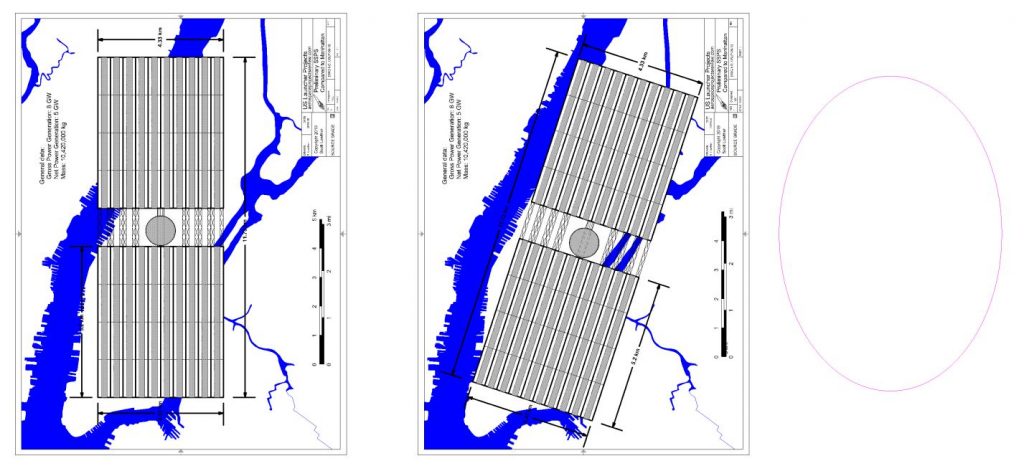One sizable document I’ve scanned for preservation is a Rockwell presentation package from October, 1985, showing a large number of space programs that the company could capitalize on. These included everything from minor mods to the Space Shuttle to major changes… stretching the orbiter, stretching the tank, adding additional boosters. Heavy lift boosters to put SLS to shame; heavy lift SSTOs; small experimental spaceplanes; manned military spaceplanes; space-based weaponry; space stations; space based nuclear power. Figured this stuff might be of some modest interest. So why not, I’ll post little bits of it from time to time.
Some time back I came across a few diagrams of the Martin B-57B&C bomber.
I have uploaded the full resolution scans (600 dpi) to the 2019-08 APR Extras Dropbox folder, available to $4 and up subscribers to the APR Monthly Historical Documents Program.
I’m putting the finishing touches on this one. My hope, if I go into production with a number of these BoGPs, is to release at least two at a time: saves on shipping costs. But the “SPECTRE” BoGP will be a test case of sorts. If it is popular, more will come. If it tanks… well…
I’m still tinkering with the diagrams, but you can see below what I’m planing on including. Along with the diagrams will be a mess of explanatory text. Some will be on the diagrams themselves, as you can see; others will be on a separate cover page. For the science fiction designs, the intent is to describe the vehicle as if it was real, with an in-universe description. Sometimes from the people or organizations involved (which will be the case for SSV), and sometimes from the viewpoint of outsiders trying to describe them (such as is the case with the SPECTRE vehicle). Consequently, there will be more than just the dry statistics of length and weight, but also history and analysis from someone who may or may not understand the thing, and may or may not *like* the thing, and who may or may not be the sort of person you’d *want* to understand the thing.
For the SPECTRE, I have about three pages of text. To me it seems god, but I’ve been wrong about this sort of thing before. So I’m looking for three (3) people willing to give the cover pages (*just* the cover pages, not the mess-o-diagrams) a look, and then review in the comments section below what they think. Undoubtedly there’ll be spelling and grammatical errors, but what I’m interested in is… was it worth reading? Did it keep you interested? Make you more interested in the full booklet? Basically… was it good?
If you are interested, leave a comment expressing interest below, and if you’re one of the first three to do so I’ll send along a PDF of the cover page. This:
But not yet this:
Thanks.
Note: the in-universe text will be for different universes. The SPECTRE Bird vehicle isn’t from the same reality as the War Rocket Ajax or the Helicarrier or the Messiah. It might be interesting to try to create a Grand Unified Theory of Fiction slapping everything into the same continuity but… nah.
Just finished the initial cut of diagrams for US Transport Projects #9, except for the interior layout of one jetliner…
Previously…
US Transport Projects #8
Cover art was provided by Rob Parthoens, www.baroba.be
US Transport Projects #8 is now available (see HERE for the entire series). Issue #8 includes:
- NACA SST: a 1947 concept
- Boeing CX-HLS: Boeings design for what became the C-5
- Bell Operational Medium STOL Transport: vectored thrust for short takeoff
- Convair Limited War Amphibian: A concept for a single plan to meet both land and sea plane requirements
- Bell Hypersonic Transport 1980-1990:A two-stage turboramjet/rocket concept
- Lockheed Hybrid Wing Body 757PF-Sized Freighter: a recent design for an advanced transport
- Lear Liner Model 40:a small airliner/large executive transport
- Boeing Model 759-153A Resource Carrier: A big flying wing natural gas “tanker”
USTP #8 can be downloaded as a PDF file for only $4.25:
——–
McDonnell Douglas spent much of the 1970’s trying to get NASA, the Marines and the Navy to fund the development of a lift-fan-based VTOL aircraft concept, the Model 260. This general concept showed up in a number of different forms, from strike bomber to carrier onboard delivery transport to Marine troop transport. Shown below is a”Research Technology Aircraft,” a proof of concept prototype to be assembled from existing aircraft components, much as Rockwell did with the XFV-12.
I’ve made the full resolution version of the diagram (equivalent to 37 inches wide at 300dpi) available to above-$10-subscribers of the APR Monthly Historical Documents Program/Patreon.
If this sort of thing is of interest, consider subscribing. Even a buck a month will help out; but the more you subscribe for, the more you get… and the more you help me get from eBay and save for the ages.
A while back I sold a few copies of a prototype of a “Booklet of General Plans” for the Space Station V from “2001.” The feedback I got suggested that the idea has merits, and with some refinement it might be something interesting.
Along with Space Station V, I have made mention of wanting to do the same sort of thing with Clavius Base and The Orville. Clavius Base is a concept at a fabulously early stage. The Orville’s 3D model is long completed, but recent news is that Eaglemoss will release a line of Orville ships starting in 2020. Since the Eaglemoss Star Trek ships come with a small magazine that provides canonical in-universe data, I will wait to see what comes out at that time.
I have a number of other Booklets in various stages of completion. Some are still in the modeling stags; some require a whole lot of tinkering with the diagrams, some are in the writeup stage. Each will have text to go along with them that will be an in-universe description of the vehicle; the “Bird One,” for example, depicts a US government attempt to reverse engineer the design as best they can based on fragmentary data. The Ajax will be another US Government attempt to describe Mongo tech after the events of “Flash Gordon.” And of course some of these, such as the Dyna Soar and the 10-meter Orion, will be non-fictional descriptions.
For those nerdy and old enough to remember the glory days of the “Booklets of General Plans” that were released for various Star trek ships, you’ll remember the pages and pages of deck plans. With a lot of these, “deck plans” won’t really be possible… for Dyna Soar, there really wasn’t a deck, and for the Helicarrier there were *way* too many decks. So each Booklet will be its own thing, with diagrams, inboard profiles, etc. that are appropriate. I’m thinking of pricing these something like $2 per page, more or less. The basic set will be 11X17 sheets, folded in half and put in a letter-sized envelope; but I’m also contemplating a limited run of each possibly on better paper, and either rolled or bound within a 12X18 binder.
If this sort of thing is of interest, take a look and let me know in the comments which one or more appeal. This is a sloooow, long-term project, more hobby than anything. So if you want one… let me know. And let your friends who might want one know. A few others arne’t included below, such as the “Men Into Space” ship and the Boeing IMIS Mars craft, which will be a *huge* set.
Now available… the newest and biggest issue in the US Aerospace Projects line.
US Launch Vehicle Projects #6
Cover art was provided by Rob Parthoens, www.baroba.be
US Launch Vehicle Projects #06 is now available (see HERE for the entire series). Issue #6 is devoted to the launch vehicles proposed for the 1970’s Solar Power Satellite program. This required millions of tons of payload delivered into Earth orbit over a span of decades, with flight rates of several times per day for each vehicle. This program produced some of the largest and most ambitious launch vehicles ever designed, and was the last time that launchers of this size were ever seriously contemplated. Appropriately, USLP#6 is by far the largest issue of US Aerospace projects to date at over seventy pages, three times the size of a usual issue.
Topics in this issue include the Rockwell Star-Raker, several Boeing Space Freighters, the Boeing “Big Onion” Low Cost Heavy Lift Vehicle (antecedent and descendant designs), a Grumman two-stage HLLV, a Rockwell HLLV and “small” HLLV, NASA-JSC heavy lifters, a Boeing/Rockwell Personnel Launch Vehicle and a Boeing winged SSTO. Along with orthogonal views, a number of perspective diagrams are also included.
USLP #6 can be downloaded as a PDF file for only $9:
——–
When it comes to aircraft diagrams, I’m all set. But ships are outside of my, ahem, wheelhouse. Nevertheless, I’m looking for accurate side-view diagrams of *big*ships, such as the Nimitz-class carrier and the largest oil tankers and container ships. Who can hook a brother up?
UPDATE:
Not perfect, but “shipbucket.com” falls securely into the “good enough” category for what I need for most of what I’m looking for.
Three possibilities, comparing the initial relatively dinky (dainty at less than 12 km in length) initial NASA SPS concept to Manhattan island (in a simple line drawing), to San Francisco and to the the regions around Manhattan. What looks best?
UPDATE: pretty universally the far right option was the most popular one (insert political joke HERE). A suggestion was made to rotate the SPS to align it with the island, which I’ve done below and… meh. It doesn’t really do it for me. I’ve blown up the thickness of the dimension lines. The somewhat faint ellipse at far right in the new image below is the receiver array at 45 degrees latitude. Clearly it is just about as big as the SPS itself, which at first blush might make one wonder “why go to the bother, then?” But there are a few points:
1) Size is determined by the dispersion of the microwave beam coming from a 1-km diameter emitter array in geosynchronous, *not* on the max power density it could handle. So you could potentially have a couple SPS’s beaming down to a single array.
2) Unlike a PV array the microwave receiver lets the bulk of regular light come through. it could be roughly as dense as chickenwire, meaning that you could suspend the net-like receiver over crop land, park land or water.
3) The receiver, like the SPS, works 24 hours, day and night, good weather and bad, with no need to track the sun. A ground-based PV array with the same footprint would cost a lot more than the receiver and produce much less total energy averaged out over the year.
I’m in the final stages of US Launch Vehicles Projects #06, with a special focus on launch vehicles for the Solar Power Satellite program. Included there is a plan view of the initial NASA SPS, with Manhattan island for a scale reference. Why Manhattan? Because the SPS satellites were approximately the size of Manhattan, and thus Manhattan was used in schematics and art of the time to illustrate the scale of the program. But… who actually thinks in terms of Manhattan island as a unit of distance measure? Tell me that “such-and-such is the size of Manhattan,” it’ll mean nothing to me, as I’m sure it means nothing to the vast majority of people.
So… since this issue will arise again in future projects I’m working on, what alternatives to Manhattan are there to serve as scale references for structures twenty kilometers long?
